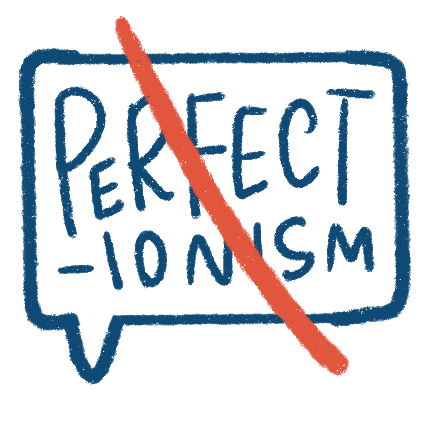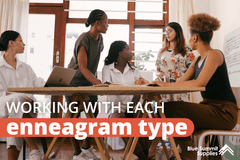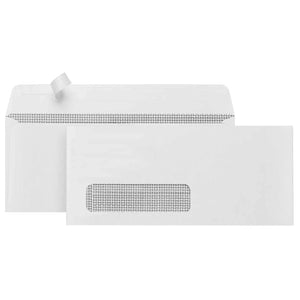“Stop doodling and pay attention!” It turns out this way of thinking is completely wrong. Doodling isn’t a sign of not paying attention; it actually increases focus, aids memory, and promotes mindfulness, among many other benefits.
We’re going to dig into those benefits—8 of them—and share tips for how you can practice doodling more, whether you believe you are an artist or not.
What Are the Benefits of Doodling?

1. Doodling Keeps Your Brain Active
When our brain isn’t stimulated, recent research suggests it goes into a kind of default state to conserve energy. Thisdefault mode network is active when we’re daydreaming, replaying old memories, imagining the future, or hypothesizing about what the people around us are feeling. Our default network is active when we’re thinking about nothing in particular—we’re just thinking.
Doodling keeps us rooted in the present moment while still providing our brains with a break. Although it is not fully engaged, our brain is still processing and engaging with outside stimuli. It may not look like it from an outsider’s perspective, but people who are doodling are actually paying more attention than those who are sitting silently at the back with their eyes glazed over, replaying a previous conversation or trying to guess which Game of Thrones character their coworkers most closely resemble.

2. Doodling Helps You Focus
Expanding on the first point—doodling actually helps us focus since it grounds our mind in the present moment. It may feel and sound counterintuitive, but you’re actually more attentive and aware while in the process of doodling versus allowing your mind to go into default mode.
Because what happens when we’re “just thinking?” We lose focus, we become distracted, and we forget what the person speaking to us was saying. We become lost in our own mind, our head in the clouds.

3. Doodling Aids Memory Recall
An often-cited 2009 study by psychology professor Jackie Andrade found that people retain more information when doodling than when simply sitting still and ‘listening.’ Andrade had participants listen to a boring phone message and then recall information about the message afterward. Half of the participants were given a piece of paper and asked to shade in some circles and squares but told not to worry about staying within the lines. The doodlers were found to be much better at recalling information.
Andrade hypothesized that the act of doodling boosts concentration by keeping the mind alert during unstimulating activities, avoiding the complete distraction that comes with daydreaming. Doodling provides just enough stimulation to keep our brains online and attentive while still giving us a break.
This benefit can be applied to taking school or meeting notes. Instead of mindlessly copying down the words you hear, try to draw out some of the main points using symbols and simple imagery. Think you’re not someone who can draw? Doodling is something everyone can do and a skill you can build upon. More on that below in the How to Doodle Moreportion of the article.

4. Doodling Increases Creativity
Whether you believe you’re a creative person or not, creativity is a skill you can build. Doodling is a simple way to increase your creativity. You don't need to know how to draw or have any previous artistic experience. All it takes is having something to write with and something to write on.
Drawing is inherently creative; you’re creating something out of nothing. Doodling stimulates creativity because all of the ideas are coming directly from your own mind. Want to build your creativity skills ? Practice doodling!

5. Doodling Promotes Mindfulness
Mindfulness is when we’re fully aware of what’s around us. The practice keeps you rooted in the present moment, acutely aware of your surroundings and how they’re affecting you. Instead of dwelling on a fight you had with your mother or your spouse last night or ruminating on the leftovers you will microwave for dinner, doodling can help you remain mindful of your current situation. You’re focused on the here and now instead of past mistakes, what ifs, or the endless possibilities of the future.
As we’ve established, doodling is the opposite of letting your mind wander. Doodling keeps your feet firmly planted on the ground. Practicing mindfulness improves focus, eases stress, boosts our mood, and enhances our self-awareness—and doodling is an excellent mindfulness activity.
If you’re feeling overwhelmed by negative thoughts, you can take a walk in nature, retreat to a dark corner of your home or office to focus on your breathing, or you can put pen to paper and start doodling.

6. Doodling Reduces Stress
According to the American Psychological Association, Americans are stressed. Between COVID, the war in Ukraine, and inflation, stress is at an all-time high.
Fortunately, doodling mitigates the toxic effects of stress, as doodling is thought to trigger what Herbert Benson, a Harvard cardiologist, identified as our relaxation response; essentially, the antidote to our fight-or-flight response.
Our fight-or-flight response is triggered multiple times throughout the day despite the fact that we’re not actually faced with multiple life-threatening situations. As a result, our mind and body are often taxed with overactive stress hormones that, over time, increase our blood pressure, muscle tension, and heart rate.
When our minds aren’t engaged in the present moment, they slip into a default state and drift to other thoughts—most likely, the things we’re most stressed about, whether that’s the state of the world or our personal lives.
Doodling is rhythmic and repetitive. It synchronizes our hand and eye, which coordinates our body and mind, making us feel calm and relaxed.
A study in 2016 found that after making art, 75% of the study’s participants had lower levels of cortisol in their saliva. Some of the participants were artists, and some were not, but the results were the same. So regardless of whether you draw for fun or not, the simple act of doodling will help lower your stress levels.

7. Doodling Can Spark New Ideas
When we doodle, we aren’t drawing within the lines or shading predetermined spaces. It’s up to us to decide what goes on the page. In doing so, you’re helping your brain make new connections and see things in ways you might not have before.
You never know what’s going to spark your next great idea. Doodling helps us see things from different perspectives, and just the act of doodling will keep you in a creative, innovative mindset—one that’s ready to make connections and think outside the box.

8. Doodling Mitigates Perfectionism
Doodling isn't about being perfect—far from it. Doodling is messy and scattered and doesn’t need to make one bit of sense.
Yet, many of us avoid doodling because we label ourselves ‘not artists.’ Doodling involves drawing. Drawing is art. I am not an artist. Therefore, I cannot doodle. How many times has this excuse crossed your mind? We tell ourselves since we can’t do something perfectly or not very well, there’s no point in trying. We’ll simply fail and embarrass ourselves.
But here’s the thing: it’s actually impossible to make a mistake when doodling because there’s no wrong way to do it. Doodling is all about the process, not the result.
If you’re a perfectionist, doodling can help reduce those tendencies and help you see that there’s beauty in imperfection, and if not beauty, FUN! You’re not creating the next Mona Lisa; you’re promoting your own mindfulness, focus, and creativity while doing something that has no need to be perfect. If you’re trying to make your doodle perfect, you’re missing the point—and you’re probably losing focus on the task at hand.
How to Doodle More (Even If You Don’t Like to Draw)

Begin With Basic Shapes
Anyone can doodle. You don’t need any special skill or experience, but you can help yourself by learning and practicing basic shapes.
There are countless articles, books, and online videos on how to doodle that can help you get started. Stay away from more complex ‘how to draw books’ at first since the key here is simplicity. Learn how to doodle basic shapes, lines, and common visuals, such as stick figures, houses, clouds, flowers, etc.

Use a Notebook Without Lines
To encourage yourself to doodle more, invest in a blank notebook so that you aren’t inhibited by the lines. When our brains see the lines in a notebook, we naturally want to stay in between them—after all, it’s what we’ve been taught since a very young age. A blank notebook is a free canvas. You can use your words, but you’re also free to express yourself with doodles and visual elements.
If switching to a blank notebook feels like a big step, try a dotted notebook at first until you get used to having more freedom on the page.
📓 Learn more and view some of our favorite notebooks: Common Types of Notebooks Explained, Including Notebook Size Charts.

Take Notes Using Only Images
Push yourself when it comes to doodling. Doodle notes is a form of taking notes that utilizes imagery instead of words. This practice takes time to learn, but it can be an incredibly powerful notetaking method since the visuals help you retain the most important information.
Start small. Add more doodling to your notetaking over time, and continue to add more and more visuals to your vocabulary until you’re able to leave words behind and take notes exclusively with doodles. Forget X-Ray vision; doodling could be your new superpower!
More From Blue Summit Supplies
💡 Virtual Brainstorming Tools, Exercises, and How-To Guide
💡 The Importance of Reading Books: 8 Advantages of Reading Regularly
Our office blog is dedicated to helping professionals reach their potential. Follow Blue Summit Supplies for the latest advice for workplaces, classrooms, and business professionals.
If you have any questions or want to talk to someone about office supplies, leave a comment below or connect with us on Twitter, Facebook, or Instagram.









